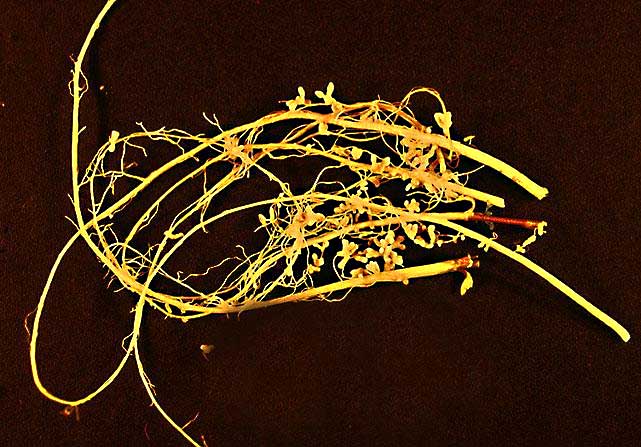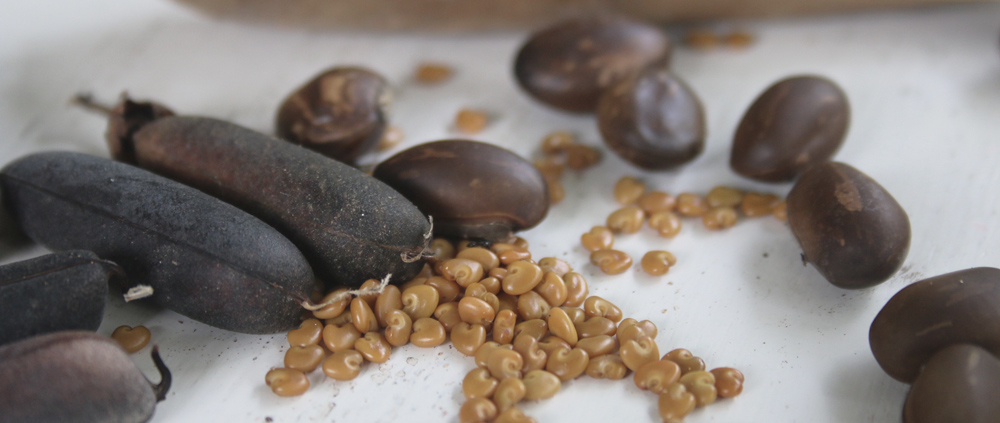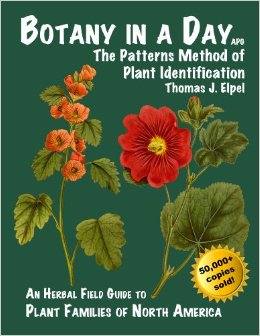I’m not picky when it comes to sources of soil fertility.
Sure, I could go the classic route and plant soybeans or peanuts, like farmers do, or I could go the grocery store and buy dry beans, peas and lentils, or…
…I could just go wander through the woods or even along the shoreline and pick up seeds from obvious nitrogen-fixing species.
Many, though not all, members of the bean and pea family, more properly known as Fabaceae, enjoy a special relationship with certain soil microbes which allows them to take nitrogen from the atmosphere – which is inaccessible to plants – and “fix” it into a form which plants can use.

The roots of the plant share sugars and water with the bacteria, and in return, the bacteria give the plant nitrogen. It’s a fantastic design and one the gardener can put to work in his garden.
Once you learn to spot members of the bean and pea family, it because easy to find them.
If you don’t feel like you’re very good at plant ID, the book Botany in a Day has a lot of photos which will get you spotting plant families in no time.
Though you’re not really going to learn botany in a single day – unless you’re some kind of a savant – Elpel does a nice job visually putting together plants into families and getting you going. You might not nail down a species right away, but you will be able to tell pretty certainly that the plant is in the hibiscus family or the soapberry family or, as concerns today’s post, the bean and pea family.
Nitrogen-fixing trees and plants are everywhere. In the case of the bay beans and Crotalaria I picked up at the beach, I know both of them fix nitrogen – and even if I didn’t know for sure, I could make a very good guess since they look like beans and are also nice and green in an area where they don’t have much right to look so chipper!
I’ll be planting these in rough areas and then later cutting them for use as compost while leaving the root systems in the ground. If you leave the roots instead of pulling them, you get more biomass in the soil and as the roots decay they’ll feed the next thing you plant.
Crotalaria isn’t edible (so far as I know) and the edibility of bay bean is disputable.
This woman, however, cooked and ate some – plus she made a nice privacy screen by planting a bamboo trellis with bay beans – but eat at your own risk. I’ll wait until I have more data.
Edibility is a nice plus with nitrogen-fixers but isn’t necessary. I’m mostly interested in feeding the ground for now.
If you’d like to see some of the many nitrogen-fixers I added to my old food forest in North Florida, check out this post.
Have a great Saturday – get out there and garden!



4 comments
There is an edible Crotalaria in your neck of the woods called Chipilin – Crotalaria longirostrata. Never tried it but I have heard of some folks around here growing it.
I would like to find that – thank you for the heads-up.
Alfalfa – pea family and a great cover crop. Also feed the chickens and rabbits with it. And pretty flowers to boot! Win, win, win
Oh yeah! Alfalfa is the bomb in the right climate. A Swiss Army knife species! Good addition.
Comments are closed.